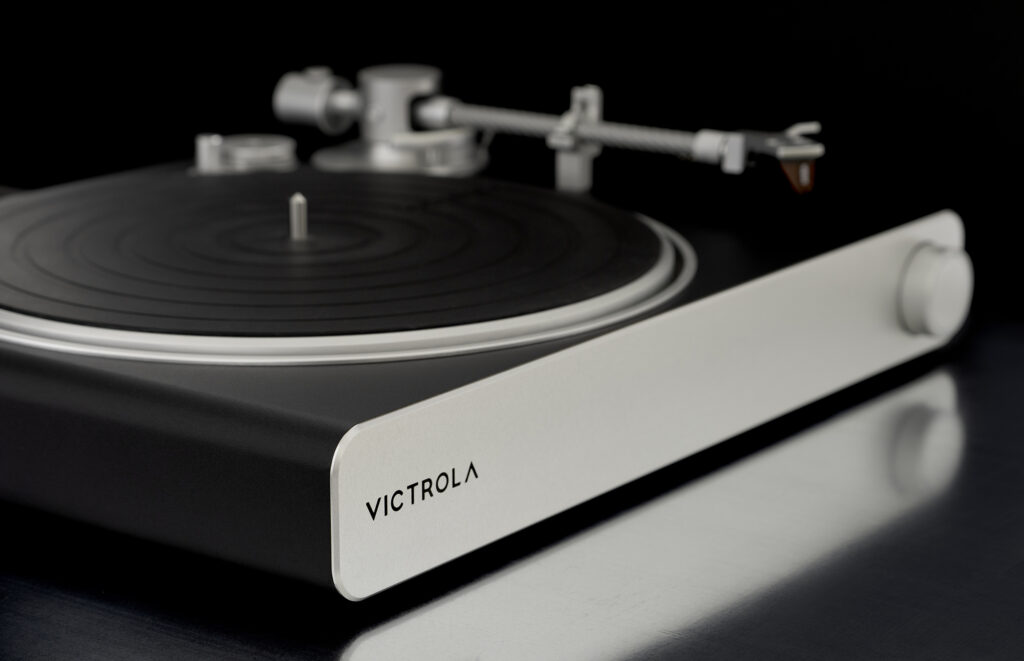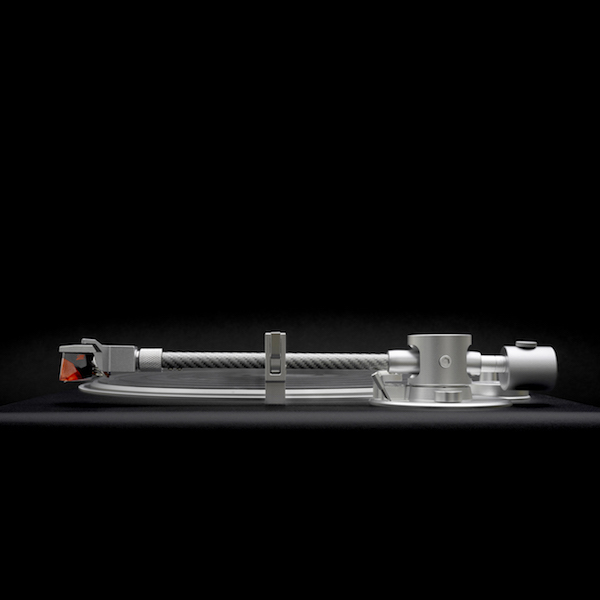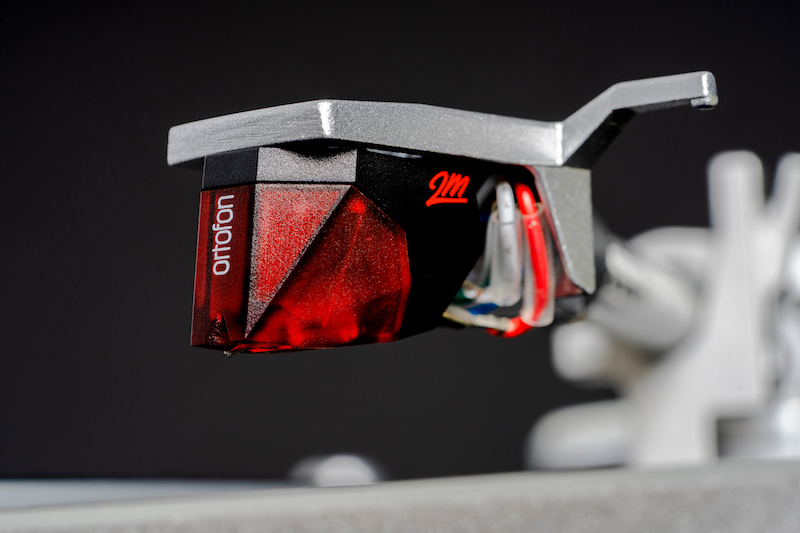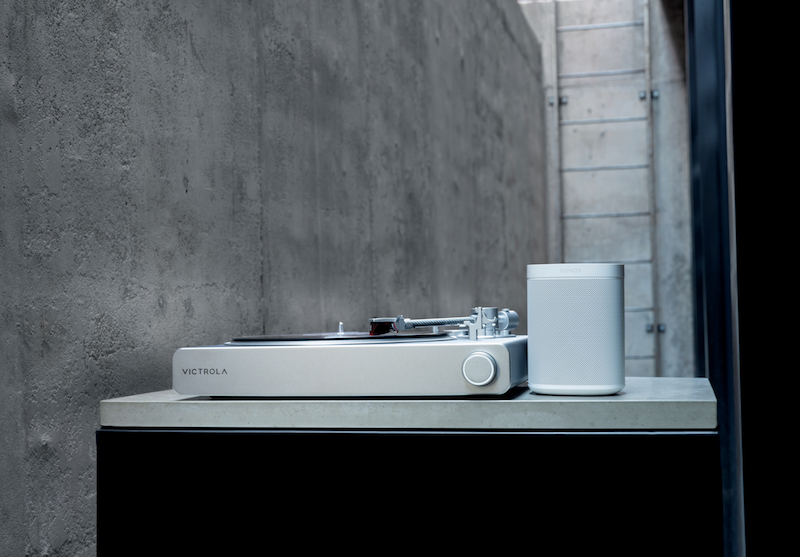Victrola is the kind of brand name that conjures up a gauzy, bygone era captured in the moody lyrics of the song Black Velvet by Alannah Myles:
Mississippi in the middle of a dry spell
Jimmie Rodgers on the Victrola up high
Mama’s dancin’ with a baby on her shoulder
The sun is settin’ like molasses in the sky…
As an aging Gen Xer who truly appreciates the convenience and fidelity of digital audio, the whole vinyl record renaissance thing has been lost on me. That’s part of the reason I had no idea that “Victrola” was anything more than a nostalgic “record player” reference in a song released the year I graduated from high school. That was until this past fall, when I learned that the brand was not only alive and well, but had formed a partnership with wireless speaker leader, Sonos, introducing the Victrola Stream Carbon (Model VPT-3000).
Founded in 1906 as The Victor Talking Machine, Victrola is not only alive and well, but it is now perfectly positioned to cater to 18- to 36-year-old consumers who are the fastest-growing and the largest segment of vinyl buyers.
Led by CEO Scott Hagen, a veteran of Sound United and Best Buy, the Denver-based manufacturer is catering to the nostalgia for a time that its target customer didn’t actually experience. That’s in contrast to yours truly, who had one foot in the vinyl world (I purchased exactly two vinyl records as a teenager before realizing it was much cooler listening to cassettes on my Sony Walkman.
So, clearly, I’m not the best person to be reviewing a Victrola Stream Carbon Sonos-enabled turntable. But ever since my 15-year-old daughter started poaching dusty vinyl records out of her grandpa’s collection and asking for the latest LP releases from Taylor Swift and Lana Del Ray for Christmas, I figured it might be fun to experience how that much-ballyhooed warm analog sound of vinyl could mesh with the much more convenient technology: wireless speakers.

The Victrola Stream Carbon is shipped in pieces presumably to prevent damage while in transit. So, out of the box, a little assembly was required before firing up the turntable. After placing the platter onto the turntable and attaching the belt and tonearm, you place the silicone slipmat on the platter, slide on the cartridge, and attach and align the counterweight according to instructions in the owner’s manual. The belt attachment is the only part of this process that takes a little extra thought, but the instructions in the manual are very easy to follow.

After attaching the power cord to the unit and plugging it into a wall outlet, the Victrola Stream Carbon automatically booted up and the illuminated the control knob on the front of the unit. When it began flashing green, I knew that the turntable was ready to connect to my home Wi-Fi.
The Victrola app is pretty barebones, but it makes adding or managing a turntable pretty straightforward. The key to connecting the turntable to the network is to allow Bluetooth and location permission in the app to see your turntable. From there, you select your default Sonos speaker or group within the app and ensure that autoplay is enabled as well.
After the setup process via the Victrola Stream app, I was able control the Victrola Stream turntable from the Sonos app or the illuminated control knob, playing music wirelessly to my Sonos speakers as soon as the needle hit the record.
The Victrola Stream Carbon was built with the highest quality materials, such a low-resonance veneer plinth with premium metal turntable components, and a carbon fiber tonearm with a custom-designed removable headshell dust cover. To further elevate the wireless vinyl listening experience, Carbon ships with a premium Ortofon Red 2M moving magnetic cartridge that will deliver optimized sound reproduction and a high level of sonic accuracy through listeners’ Sonos speaker systems.

I didn’t spend a ton of time with the Victrola Stream Carbon, but enough time to know that static and pops that come from old records are still something I just can’t appreciate about vinyl. I clean the records with a kit that I bought my daughter, and this helped a bit. I also realized that it was better to locate the turntable further away from my listening position to avoid mechanical sounds from the player. The headshell dust cover can only be placed on the unit during storage: I wish there were a hinged lid to use during playback.
Once I was a short distance away from the Victrola Stream Carbon, it was fairly easy to imagine to I was streaming digital music from the Sonos app or Spotify, until the random pop or unfortunate skip from a scratched record. I’d be lying if I said that I noticed any added “analog warmth” from the vinyl experience.
I relate to the tactile experience of handling vinyl and exploring old record jackets. I also appreciate the opportunity to revisit old family record collections or to pick up a new release at retail to see what color vinyl it’s on. And, it’s pretty cool to be able to then stream the songs from vinyl wirelessly to a multiroom Sonos system.
There’s definitely a very big customer base for a Victrola Stream Carbon Sonos-enabled turntable, even if that might not be grouchy Gen Xer like me, who prefers crystal clear digital music from a device that he can carry in his pocket. I think that Victrola has done a great job of blending the retro audio technology of vinyl record players with the modern convenience of wireless audio in a way that your average consumer in a younger demographic can afford and truly appreciate.









